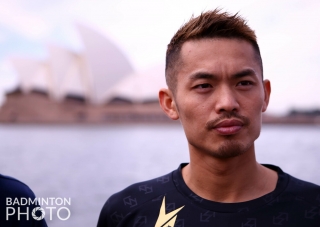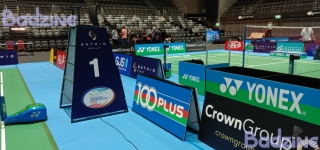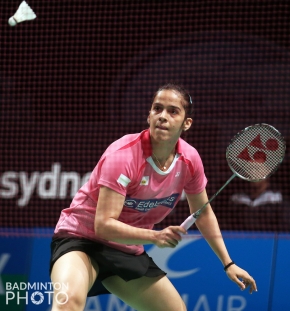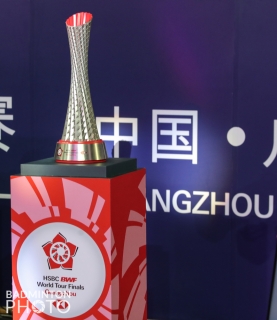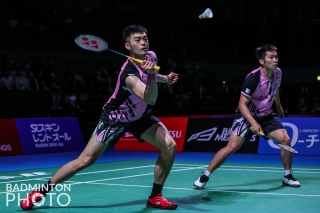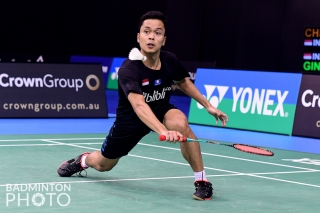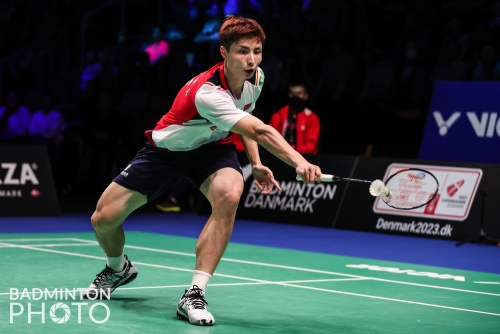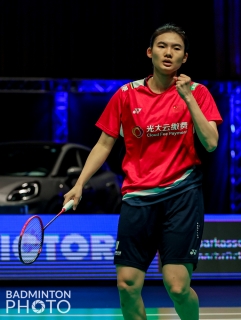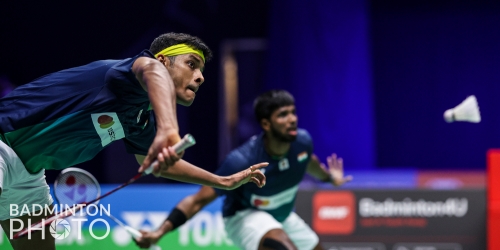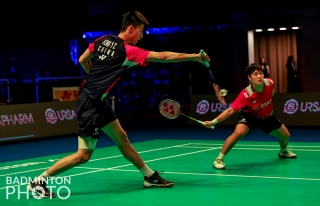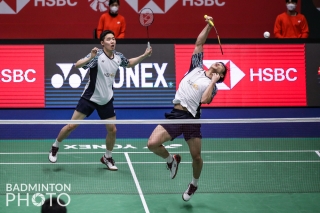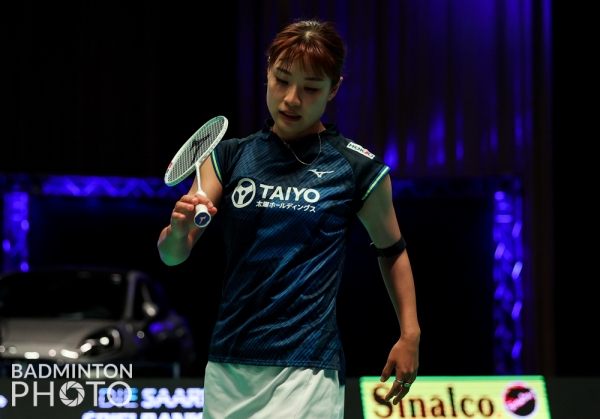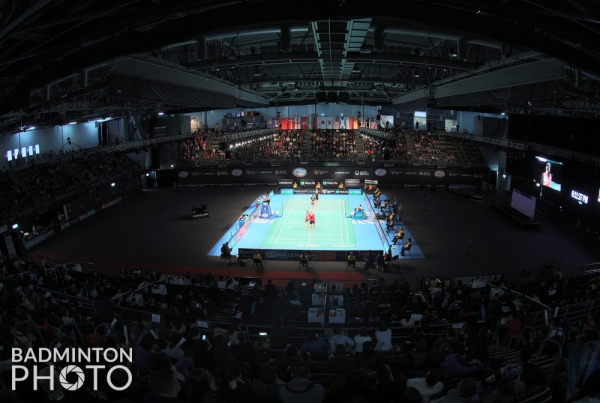
Our preview specialist, Aaron Wong, offers three perspectives on the matter raised in the title question.
By Aaron Wong. Photos: Badmintonphoto
Let’s take three perspectives on the matter.
Why do locals go? Potential vs. unpredictability
Badminton in Australia is a spectator sport where ticket-buyers make unilateral instead of collective decisions, which is rather un-Australian behaviour compared to rugby (NRL), Aussie Rules (AFL), cricket, football (A-League) and tennis, to name a few that dominate local TV coverage on a weekly or daily news basis.
Sydneysiders badminton ticket purchasing habits can change at a whim and are hard to predict. Thus, it’s both a surprise to learn from the tournament director as well as to himself, Mr. Loke Poh Wong, that the 2022 Aussie final has sold both at the quickest rate and the most tickets in its history – more than during its Superseries era and a decade since it moved to Sydney. So much so that extra allocated seating has been opened to meet demand.
Resuming after three years of pandemic interruption might have something to do with it.
Spectators of the other sports mentioned in contrast are dependable. They will go because friends are going, or there’s a love of the vibe of live sport, or they are loyal to a team or player through a couple of winning as well as plenty of lean seasons, or most importantly there’s an appreciation that support in large droves means healthy sponsorship and ongoing viability. Of course, there is the context that there’s enough known about the Aussie athletes and enough of these personalities to get behind, a context which badminton lacks.
There’s not a lot for tournament organisers and sponsors to count on apart from knowledge of the potential that there’s a large badminton-playing population in the harbour city who consistently fill several 20-court badminton specific halls every night of the week. It’s a paradox that locals’ love for playing their sport doesn’t translate to guaranteed bums on seats but change seems afoot now.
What’s known is that locals respond purely to marquee names and faces on a poster, which is different from saying they notice purely highly ranked players. You would have seen nary a promotional material ever highlighting the achievements and formidableness of former women’s doubles world #1 Tang Jinhua even though she was a contender and came within two points of becoming champion. It used to take at least a mention of superstars Lin Dan, Lee Chong Wei, or Saina Nehwal to catch the attention of the Sydney masses, and more so than Lee Yong Dae as it transpired.
What’s the reason a player chooses Australia? Economics vs. Confidence
China’s zero-COVID policy has meant the late cancellation of the Victor and Fuzhou China Opens, World Tour 1000 and 750 tournaments respectively, which suddenly made this Australian World Tour 300 event the last major tournament on the calendar before the invitational World Tour Finals season finale.
In fact, while players were deciding about entering the Australian Open the World Tour Finals to be held in Guangzhou had been cast in doubt too. But we now know Guangzhou will go ahead so what benefit the China predicament gave with one hand it is likely to take some back with the other. Even though Guangzhou’s dates are almost a month after the Australian, eligible players and their national associations will be forced to reckon with a raft of COVID precautionary measures that could include entering a quarantine bubble period.
It’s a shame that this will have a late effect on the Australian cast list. But the bright side to remember is that the World Tour Finals top rankings don’t necessarily match with the world rankings. Recent men’s doubles world number 2 and reigning Olympic Gold medallists Wang Chi-Lin / Lee Yang aren’t anywhere close to qualifying for Guangzhou while women’s doubles world #26 Vivien Hoo / Lim Chiew Sien made the list and currently aren’t last on it. The two rankings only closely match in the women’s singles category.
Attending the World Tour Finals is lucrative and shouldn’t be missed if a player is eligible to grab some of the USD$1.5 million in prize money. However, those competing in Sydney and not Guangzhou have something more lasting to gain, which is confidence should they emerge champions. We’ve seen in recent times that confidence once lost by a player (e.g. Momota, Okuhara, Sukamuljo) takes a long time to regain, and a tournament win in that sense is more precious despite the lower prestige.
What’s my opinion? Consistently a high bar
The 2019 Australian Open souvenir magazine posed the thought “Quite likely, all Tokyo 2020 medallists are at this Aussie Open, you just don’t know it yet.”
As it turned out only the men’s singles gold and silver medallists didn’t turn up in Sydney in 2019. Despite low attendance, Sydneysiders who bought tickets did witness the eventual Olympic gold medallists in women’s singles, women’s doubles, men’s doubles and mixed doubles, plus men’s singles bronze medallist Anthony Ginting, and also the one considered the greatest-of-all-time, Lin Dan, not long before his retirement.
As a badminton commentator, I’d underline that the Australian Open has never lacked quality on display in any given year. Over its decade so far in Sydney, there’ve been 79 athletes who’ve competed who’ve been world #1 according to this year’s magazine – that’s not even counting the actual winners who’ve never reached world #1.
Singles categories: The resurgent and the struggling veterans who remain determined
Shi Yu Qi’s fall in world rankings has no bearing on his undoubtable threat and he’d be filled with optimism from his recent World Tour 750 victory in Denmark. 2021 World Champion Loh Kean Yew stands out immediately as the one standing in the way of Shi reaching another final across consecutive months.
Expect popular youngsters Lee Zii Jia (2021 All England champion), Lakshya Sen (2022 Commonwealth gold medallist) and Kunlavut Vitidsarn (2022 World Championship silver) to provide much nail-biting entertainment in the top half of the draw.
In women’s singles, twice former Australian champion Saina Nehwal, who has also slipped in rankings, has a chance to sneak deep into proceedings. She has previously confessed when interviewed at this tournament to being a little superstitious so being here again could spark renewed inspiration in her career. Let’s not forget foot blisters from mid-week didn’t stop Nehwal from securing one of her Superseries titles here.
China’s Han Yue, who is within the top eight of the World Tour Finals qualifications but can’t qualify as there are already two from China higher on the list, has been a solid performer on the circuit of late, as has compatriot Zhang Yiman. Their jobs are to figure out what 2017 Australian Champion and former World Champion Nozomi Okuhara, who’s also been struggling to find back her timing, is nevertheless capable of.
Early men’s singles matches of note:
Kunlavut Vitidsarn (THA) [6] vs. Ng Tze Yong (MAS)
Srikanth Kidambi (IND) [7] vs. Kenta Nishimoto (JPN)
Kanta Tsuneyama ( JPN) [8] vs. Shi Yu Qi (CHN)
Early women’s singles matches of note:
Yeo Jia Min (SIN) [8] vs. Pai Yu Po (TPE)
Han Yue (CHN) [7] vs. Kim Ga Eun (KOR)
Lalinrat Chaiwan (THA) [6] vs. Gregoria Mariska Tunjung (INA)
Doubles categories: Diving not optional
In men’s doubles, the hot pair to beat are India’s Satwiksairaj Rankireddy / Chirag Shetty, who find themselves in the same half of the draw as the very likeable Tokyo Olympic champions Lee Yang / Wang Chi-Lin. Wang might show signs of tentativeness having just recovered from plantar fasciitis, a foot injury, but as both Chinese Taipei men are equally talented at helming front or rear court, their flexibility in skills might still take them far.
On the other side of the draw, Korea’s Seo Seung Jae / Kang Min Hyuk and China’s Liang Wei Keng / Wang Chang are both new pairings that burst onto the scene this year and already claimed World Tour 500 and higher titles. The Koreans have the trickiest of opening rounds against Hylo Open champions Lu Ching Yao / Yang Po Han, where diving by both sides will no doubt be demonstrated to the delight of fans.
The Japanese offensive is found in every quarter of the women’s doubles draw but two-time World Championship silver medallists Yuki Fukushima / Sayaka Hirota are in the same bottom half as the compatriots who snatched gold from them, Mayu Matsumoto / Wakana Nagahara.
Korea’s reunited former World Junior Champions Baek Ha Na / Lee Yu Rim have produced some impressive scalps of late but haven’t strung a spree of them to capture a tournament yet and this could be the one.
Will it be third time lucky across three consecutive tournaments for China’s Huang Dong Ping / Feng Yan Zhe after coming runners-up at the Denmark and Hylo Opens? It’s a strong likelihood but the reality remains the hurdles of Danish second seeds Boje/Christiansen and then 2018 Australian Champions Seo/Chae.
Chinese Taipei’s Hu Ling Fang / Yang Po-Hsuan almost beat three-time reigning World Champions Huang/Zheng this year and it is interesting to observe whether they can build on that.
For the badminton nerds out there, you’ll have noticed that two-time Superseries men’s runner-up Nipitphon Phuanghuapet of Thailand and former women’s doubles Japan Superseries champion Poon Lok Yan have emerged from retirement with new Australian partners.
Early men’s doubles matches of note:
Kang Min Hyuk / Seo Seung Jae (KOR) vs. Lu Ching Yao / Yang Po Han (TPE)
Satwiksairaj Rankireddy / Chirag Shetty (IND) [5] vs. Akira Koga / Taichi Saito (JPN)
Early women’s doubles matches of note:
Baek Ha Na / Lee Yu Rim (KOR) [8] vs. Rachel Honderich / Kirsten Tsai (CAN)
Benyapa Aimsaard / Nuntakarn Aimsaard (THA) vs. Wendy Chen Hsuan-Yu / Gronya Somerville (AUS)
Early mixed doubles matches of note:
Lai Pei Jing / Tan Kian Meng (MAS) [3] vs. Gloria Emanuelle Widjaja / Dejan Ferdinansyah (INA)
Hsu Ya Ching / Lee Jhe-Huei (TPE) vs. Jessica Tan Wei Han / Terry Hee Yong Kai (SIN)
Certainty
In life, the certainties are death, taxes, and my presence every day as usual at the Aussie Open.
However, the pattern has been the Aussie Open champions always go on to great things.
Credit : Source link

